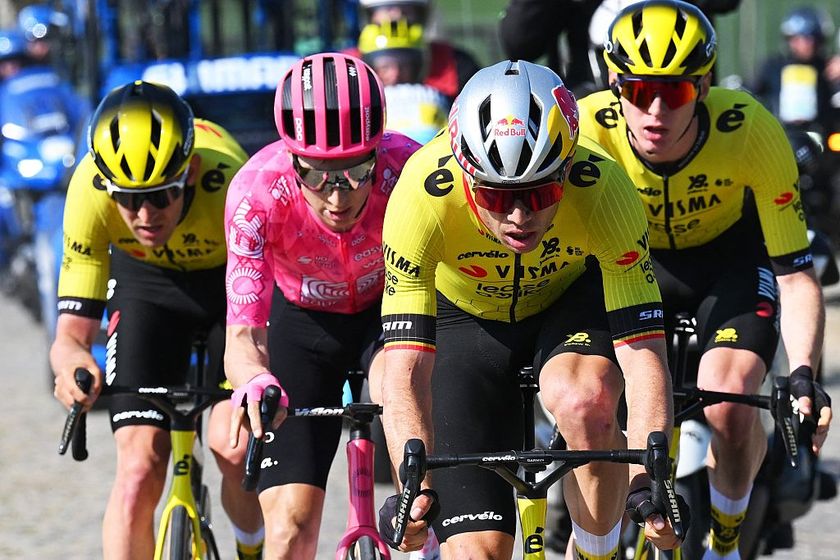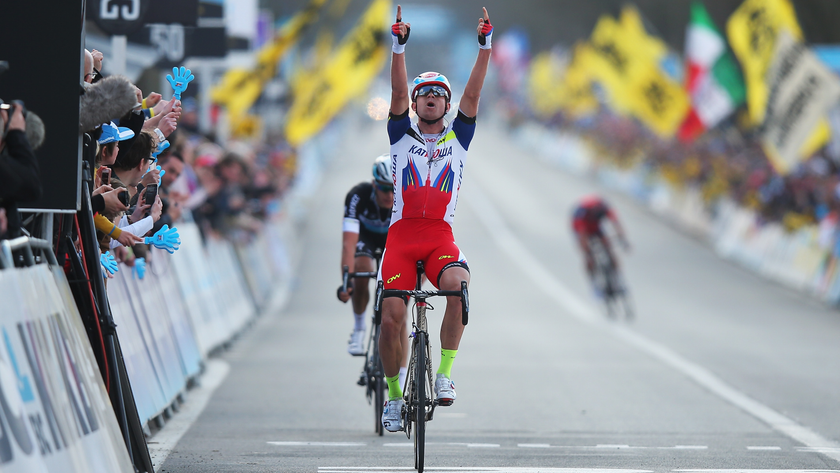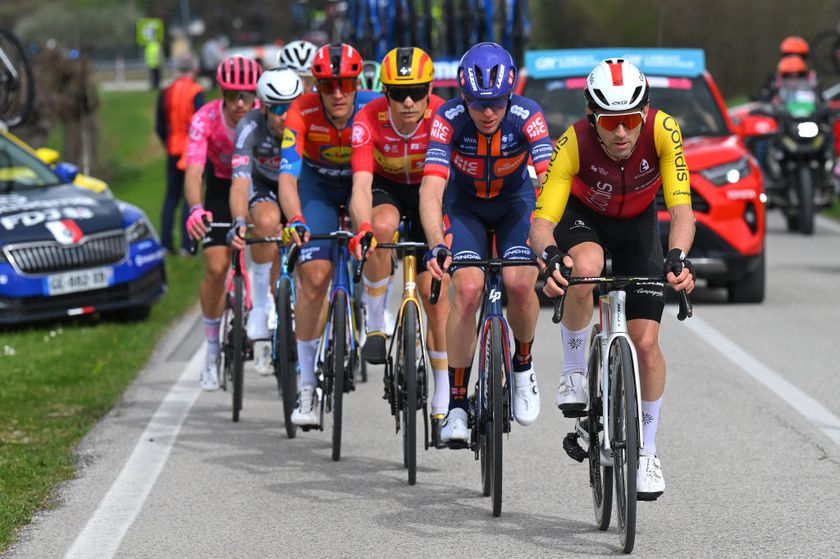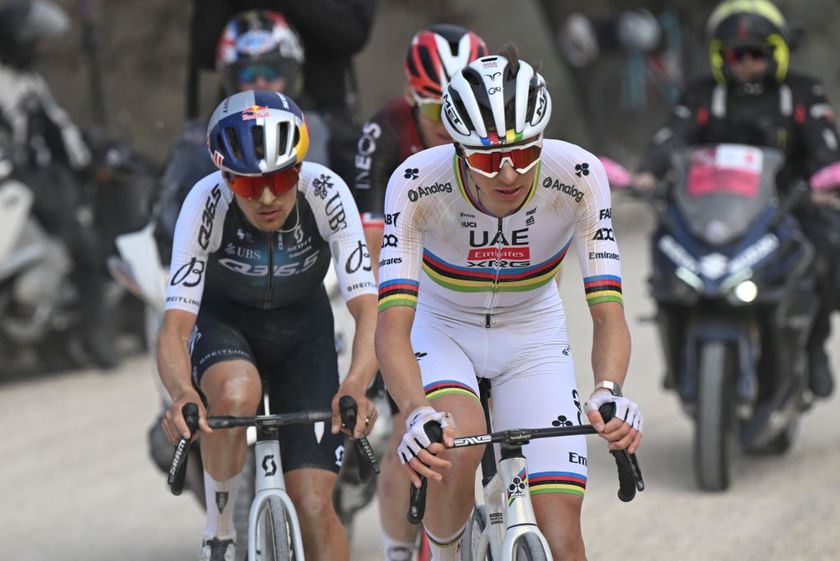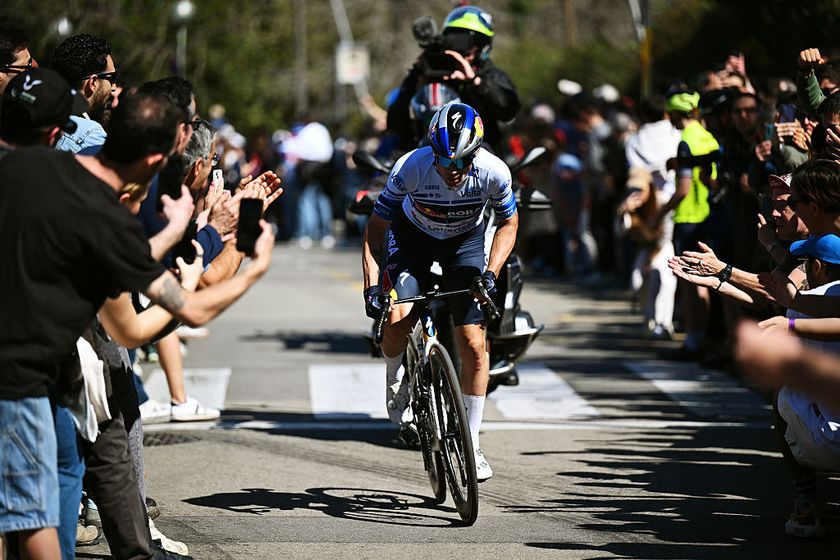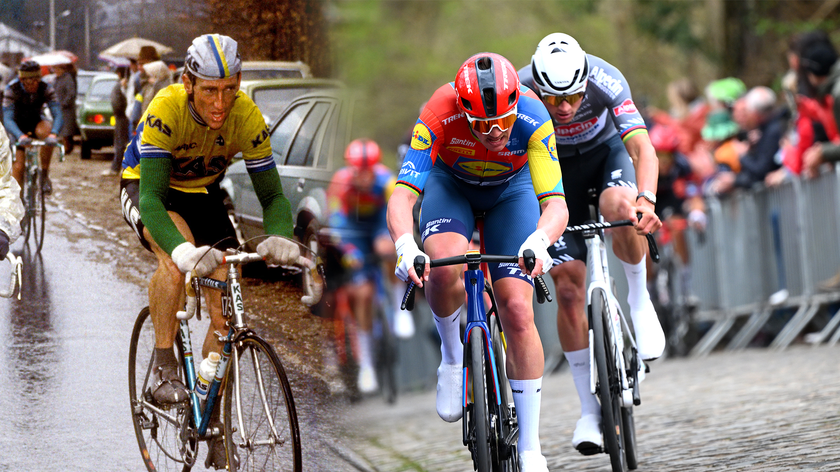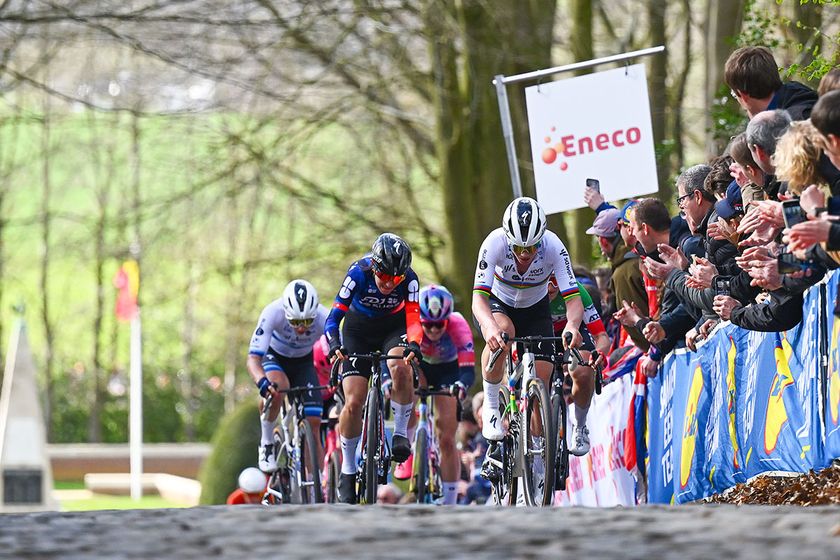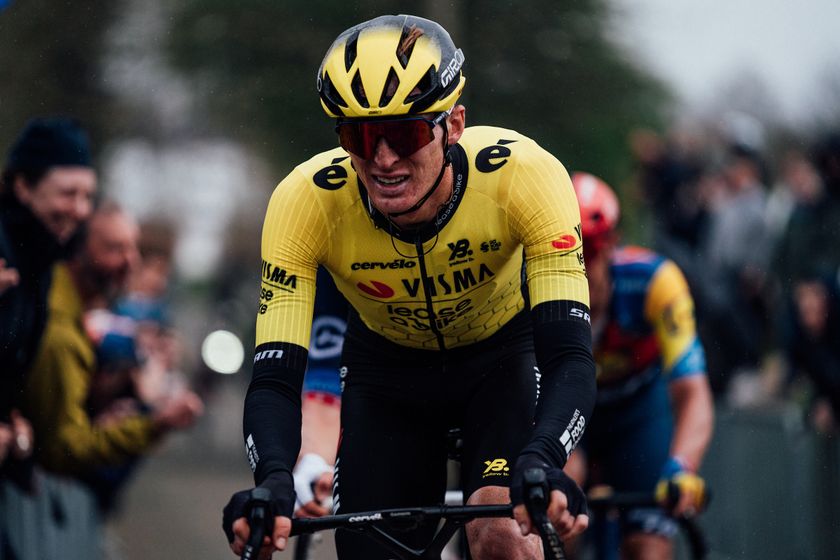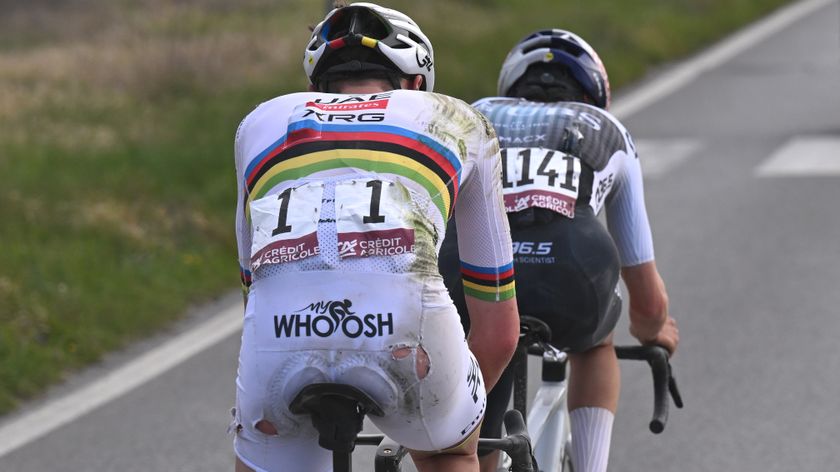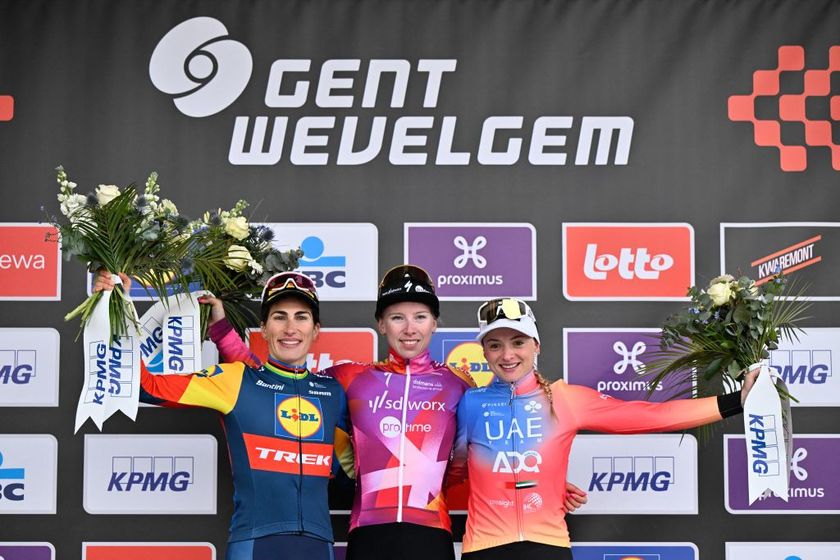Fitness questions and answers for January 3, 2004
Got a question about fitness, training, recovery from injury or a related subject? Drop us a line at...
Form & Fitness Q & A
Got a question about fitness, training, recovery from injury or a related subject? Drop us a line at fitness@cyclingnews.com. Please include as much information about yourself as possible, including your age, sex, and type of racing or riding. Due to the volume of questions we receive, we regret that we are unable to answer them all.
Carrie Cheadle, MA (www.carriecheadle.com) is a Sports Psychology consultant who has dedicated her career to helping athletes of all ages and abilities perform to their potential. Carrie specialises in working with cyclists, in disciplines ranging from track racing to mountain biking. She holds a bachelors degree in Psychology from Sonoma State University as well as a masters degree in Sport Psychology from John F. Kennedy University.
Dave Palese (www.davepalese.com) is a USA Cycling licensed coach and masters' class road racer with 16 years' race experience. He coaches racers and riders of all abilities from his home in southern Maine, USA, where he lives with his wife Sheryl, daughter Molly, and two cats, Miranda and Mu-Mu.
Kelby Bethards, MD received a Bachelor of Science in Electrical Engineering from Iowa State University (1994) before obtaining an M.D. from the University of Iowa College of Medicine in 2000. Has been a racing cyclist 'on and off' for 20 years, and when time allows, he races Cat 3 and 35+. He is a team physician for two local Ft Collins, CO, teams, and currently works Family Practice in multiple settings: rural, urgent care, inpatient and the like.
Fiona Lockhart (www.trainright.com) is a USA Cycling Expert Coach, and holds certifications from USA Weightlifting (Sports Performance Coach), the National Strength and Conditioning Association (Certified Strength and Conditioning Coach), and the National Academy for Sports Nutrition (Primary Sports Nutritionist). She is the Sports Science Editor for Carmichael Training Systems, and has been working in the strength and conditioning and endurance sports fields for over 10 years; she's also a competitive mountain biker.
Eddie Monnier (www.velo-fit.com) is a USA Cycling certified Elite Coach and a Category II racer. He holds undergraduate degrees in anthropology (with departmental honors) and philosophy from Emory University and an MBA from The Wharton School of Business.
Eddie is a proponent of training with power. He coaches cyclists (track, road and mountain bike) of all abilities and with wide ranging goals (with and without power meters). He uses internet tools to coach riders from any geography.
Get The Leadout Newsletter
The latest race content, interviews, features, reviews and expert buying guides, direct to your inbox!
David Fleckenstein, MPT (www.physiopt.com) is a physical therapist practicing in Boise, ID. His clients have included World and U.S. champions, Olympic athletes and numerous professional athletes. He received his B.S. in Biology/Genetics from Penn State and his Master's degree in Physical Therapy from Emory University. He specializes in manual medicine treatment and specific retraining of spine and joint stabilization musculature. He is a former Cat I road racer and Expert mountain biker.
Since 1986 Steve Hogg (www.cyclefitcentre.com) has owned and operated Pedal Pushers, a cycle shop specialising in rider positioning and custom bicycles. In that time he has positioned riders from all cycling disciplines and of all levels of ability with every concievable cycling problem.They include World and National champions at one end of the performance spectrum to amputees and people with disabilities at the other end.
Current riders that Steve has positioned include Davitamon-Lotto's Nick Gates, Discovery's Hayden Roulston, National Road Series champion, Jessica Ridder and National and State Time Trial champion, Peter Milostic.
Pamela Hinton has a bachelor's degree in Molecular Biology and a doctoral degree in Nutritional Sciences, both from the University of Wisconsin-Madison. She did postdoctoral training at Cornell University and is now an assistant professor of Nutritional Sciences at the University of Missouri-Columbia where she studies the effects of iron deficiency on adaptations to endurance training and the consequences of exercise-associated changes in menstrual function on bone health.
Pam was an All-American in track while at the UW. She started cycling competitively in 2003 and is the defending Missouri State Road Champion. Pam writes a nutrition column for Giana Roberge's Team Speed Queen Newsletter.
Dario Fredrick (www.wholeathlete.com) is an exercise physiologist and head coach for Whole Athlete™. He is a former category 1 & semi-pro MTB racer. Dario holds a masters degree in exercise science and a bachelors in sport psychology.
Scott Saifer (www.wenzelcoaching.com) has a Masters Degree in exercise physiology and sports psychology and has personally coached over 300 athletes of all levels in his 10 years of coaching with Wenzel Coaching.
Kendra Wenzel (www.wenzelcoaching.com) is a head coach with Wenzel Coaching with 17 years of racing and coaching experience and is coauthor of the book Bike Racing 101.
Steve Owens (www.coloradopremiertraining.com) is a USA Cycling certified coach, exercise physiologist and owner of Colorado Premier Training. Steve has worked with both the United States Olympic Committee and Guatemalan Olympic Committee as an Exercise Physiologist. He holds a B.S. in Exercise & Sports Science and currently works with multiple national champions, professionals and World Cup level cyclists.
Through his highly customized online training format, Steve and his handpicked team of coaches at Colorado Premier Training work with cyclists and multisport athletes around the world.
Brett Aitken (www.cycle2max.com) is a Sydney Olympic gold medalist. Born in Adelaide, Australia in 1971, Brett got into cycling through the cult sport of cycle speedway before crossing over into road and track racing. Since winning Olympic gold in the Madison with Scott McGrory, Brett has been working on his coaching business and his www.cycle2max.com website.
Richard Stern (www.cyclecoach.com) is Head Coach of Richard Stern Training, a Level 3 Coach with the Association of British Cycling Coaches, a Sports Scientist, and a writer. He has been professionally coaching cyclists and triathletes since 1998 at all levels from professional to recreational. He is a leading expert in coaching with power output and all power meters. Richard has been a competitive cyclist for 20 years
Andy Bloomer (www.cyclecoach.com) is an Associate Coach and sport scientist with Richard Stern Training. He is a member of the Association of British Cycling Coaches (ABCC) and a member of the British Association of Sport and Exercise Sciences (BASES). In his role as Exercise Physiologist at Staffordshire University Sports Performance Centre, he has conducted physiological testing and offered training and coaching advice to athletes from all sports for the past 4 years. Andy has been a competitive cyclist for many years.
Michael Smartt (www.cyclecoach.com) is an Associate Coach with Richard Stern Training. He holds a Masters degree in exercise physiology and is USA Cycling Expert Coach. Michael has been a competitive cyclist for over 10 years and has experience coaching road and off-road cyclists, triathletes and Paralympians.
Kim Morrow (www.elitefitcoach.com) has competed as a Professional Cyclist and Triathlete, is a certified USA Cycling Elite Coach, a 4-time U.S. Masters National Road Race Champion, and a Fitness Professional.
Her coaching group, eliteFITcoach, is based out of the Southeastern United States, although they coach athletes across North America. Kim also owns MyEnduranceCoach.com, a resource for cyclists, multisport athletes & endurance coaches around the globe, specializing in helping cycling and multisport athletes find a coach.
Lactate threshold heart rate
Timing and intensity
Zone 2 training
Very long toes
Knotted hamstrings
Ankle flexibility
Crank length
Knee pain
Sports drinks and dental health
Knee problem update
Lactate threshold heart rate
I'm a 36 year old just getting back into cycling after a 15 year hiatus. In the interim, I still stayed fairly active through organized sports, running, erg-rowing, and regular weight work. I've now been back on the bike for a year.
In any case, I'm becoming more and more confused about lactate threshold heart rate (LTHR) the more I learn; the methods of estimating LTHR appear counter-intuitive to me.
In at least two of the methods I've read about, it states that one's average HR during a field test (or specifically say the average during the last 20 minutes of a 30 minute test) is a decent estimate for LTHR. Training can then be based around percentages of this figure.
The problem is that it is commonly understood that training obviously lowers one's average HR for a given piece of work (after riding the same route for a year, at the same pace, my average HR is lower now, my PE also lower) but that I was also under the impression that training also, over time, raises LTHR. In other words, through proper training one can raise the LTHR slightly, in essence putting off or delaying the onset of anaerobic energy needs (and fatigue) for a given piece of hard work. How can these two things be true?
The problem is, if I had tested for my LTHR using these methods a year ago I was have gotten a much higher estimate than I would today, but I'm clearly crossing that threshold less now (unless intentionally trying to do so). What gives?
Thanks, and again, Happy '05
Tim Reed
Washington, DC
Eddie Monnier replies:
Using data from a field test like an all-out 30-min effort in training is a common proxy for estimating one's lactate threshold (LT). For readers unfamiliar with the LT, you might want to read http://velo-fit.com/vffaq.htm faq1 . Understand that in a lab-based test, they actually draw blood to measure lactate levels. But in field tests, we have to have some proxy and these are commonly either heart rate and/or wattage. Heart rate is subject to many variables, both internal and external, and so it's a good idea to look at trends over time.
Dario Fredrick replies:
Thanks for bringing up a challenging and interesting topic. Quite simply, average heart rate (HR) for a 20-30 min max sustainable effort is a good field test for your “performance threshold,” as it directly reflects cycling performance. This maximal steady state (MSS) is the standard you should use to determine your HR training zones. Since there are numerous methods for determining lactate threshold (LT), and lactate is not a direct measure of fatigue (see this article for more on lactate), the reliability of LT as a performance measure is suspect. Lactate or LT need not even enter the picture.
Timing and intensity
Winter here in Montréal, an it's time to go back indoors. After a so-so last season, I want to get a little more serious about my training to get better results for next summer. Most of my races take place every weekend from end of May to mid-July, with a couple more scattered in the late Summer-early Fall. The average length is about 125 kms.
I've recently gotten back on the trainer, and am slowly building up my mileage to get back that solid aerobic base.
My questions are as follows:
1 Will there be any difference in overall fitness results between one hour a day every day on the trainer as opposed to two to three hours a few days per week?
2 If I want to peak in mid-June, when should I start adding more "intensity" to my training?
3 If I take a spinning class from January to April, will that interfere with the slow, base-building process I just started?
I'm 42, an enthusiastic amateur racer, in good shape and health, 6' and 170 lbs. I've been racing for four years now and I love it.
Michael Smartt replies:
First of all, you've taken the right attitude toward having your best season ever in 2005 by grabbing the reigns now and having a little more purpose throughout your "off season". Aside from the questions you have asked, I recommend looking at just what you did and did not do in previous winters so that the adjustments you make this year will be appropriate: that is to say, doing more this winter sounds like a good plan, just make sure you don't add so much as compared with previous years that you over do it. To your questions:
Zone 2 training
It's that time of year again when many coaches and riders adhere to tight heart rate limits ("Stay in Zone 2 or else"). I can certainly understand that this is the time to spend your training "matches" doing more miles, since later workouts will be higher intensity efforts (and necessarily shorter) and you won't have the time, energy, or training slots to ride as many miles as you can do now.
That said, what damage are you doing (or maybe what benefit are you taking away) from your aerobic system if you go a reasonable amount above "Zone 2"? Due to cardiac drift, if you end up 10 bpm above Zone 2 at the end of 90-120 min at steady power (perhaps at elevated cadence to work on mechanics and stress the aerobic system), isn't that still an aerobic effort? What's actually going on down in the energy pathways and the physiology that make this workout bad for aerobic development?
Staying slavishly in Zone 2 doesn't feel like doing any overloading and doesn't that violate the first part of "overload and recovery"? I'm not advocating TT efforts, but I'd really like to understand the physical reasons for the limit.
On a related note, I read about a "dead spot" above Tempo that is to be avoided since it doesn't help training, but an explanation of the underlying physiology why this is a dead spot and the metric used to identify the zone is missing.
Darrel Stickler
San Mateo, CA USA
Dario Fredrick replies:
We can examine your questions directly if we define training zones based on muscle fiber type recruitment and corresponding energy pathways first. Bear with me as I briefly define muscle fiber types.
Michael Smartt replies:
Yours is an excellent question, especially as you have already touched on some of the reasons why "stay in zone 2 or else" as a universal training plan for this time of year (we'll call it "base") is not applicable to many if not most cyclists. Yes, zone 2 training is the corner stone of most road cyclist's program, but such a strict regimen does not take into account your available training time, training/racing background, goals for the next season or current strengths and weaknesses.
Very long toes
Here's another cleat position question for Mr. Hogg.
What can I do if I'm unable to move the cleat far enough back on my shoes to place the ball of my foot in front of the pedal axle? I have received more that one comment that I have extremely long toes for my foot size. I wear a size 44 usually, but with "normal" toes, I'd probably be a 43 with room to spare.
Do any of the other pedal systems automatically place the foot farther forward than my SPD-SL's?
Mitchell Rivers
Steve Hogg replies:
Firstly, what shoe brand and model are you using?
Knotted hamstrings
Steve Hogg had this comment in a recent response:
"At the end [of a 40km TT] ask yourself if you feel any pain or knots high in the hamstring under the glutes? This is a common tell tale if the seat is just a little too high."
I regularly get knot-like pain deep in my hamstrings, but not at the end of a ride, rather, after about 5-10 minutes at "tempo". After about another 10 minutes the pain completely fades and there is no pain at the end of the ride. I am well warmed up and it doesn't depend on temperature. It does seem to depend on whether I am in the drops or not (road bike), and bigger gears appear to make it worse. I sit quite a long way back in the saddle, have been on and off the bike over the years, and it only seems to be a problem when I'm in decent shape.
The problem is on the inside of my thigh, about 4 inches below my groin. When sitting on the bike it's roughly lined up with the nose of the saddle (and this has happened with multiple saddles). When I said deep, I was thinking in terms of sitting on the bike, where it's in a hard to reach spot in terms of on the bike massage or stretching.
I always assumed it was too bizarre to diagnose, but now...
Stephen Chenney
USA
Steve Hogg replies:
The placement you suggest doesn't sound like your hamstrings. More likely it is your adductors. They tend to fire up on a bike if we are fighting for on seat pelvic stability. Typically though, adductor pain on a bike is usually felt higher up, so I may well be wrong. Do you stretch much?
Ankle flexibility
I am wondering if you could expand on the topic of ankle flexibility. Your last edition of Q&A had several topics relating to foot positioning, pedal stroke efficiency, Achilles tendons etc. As a 42 year-old fitness rider putting in 120 mile weeks, I am aware of the three basic foot positions-neutral or flat, heel down and toe down. But I've never come across any discussion regarding the pros & cons of holding the ankle relatively stiff through the pedal stroke versus allowing the feet to "paddle" through the stroke. Recognizing that we all have our own preferences, is one technique more efficient than any other? Will the large use of the calf muscles through paddling of the feet lead to tendon injuries versus holding the ankle stiff? Is mixing of techniques (i.e. spinning with more emphasis on the upstroke followed by mashing followed by paddling) helpful or harmful through a ride by spreading the load to various muscle groups? Your thoughts on this subject would be helpful.
Mike Ewbank
Chicago, IL
Steve Hogg replies:
The best advice I can offer is to set your parameters of position by what ever information you choose to use, and then forget about how you are pedalling and just do what comes naturally to you. My reasoning for this is as follows: There a wide variety of pedalling techniques out there, though most peoples' technique fits into the category you have described as ' paddling', though the degree varies. At either extreme there are the ' toe dippers' and the ' heel droppers' and again the degree to which this is exhibited varies across a range of people. In answer to your first question, have a look at ' Technique vs Position' in Fitness Q&A for August 23 2004 for a discussion about varying pedalling techniques and their relative efficiency.
Crank length
I am 173 cm short and ride (road bicycle) on 170 mm cranks for last 12 months. I do not experience any particular discomfort when spinning and my average cadence is ~92 rpm. I have been recommended by a well recognized cycle-fit expert to try riding on longer, 172.5 mm cranks. How do I know if my 170 mm or 172.5 mm cranks are a better fit for me? What are the tell-tale signs of wrong length cranks (too long? too short?)? is it a likely a pain experience or loss of performance? Anything else?
Yuri Budilov
Australia
Scott Saifer replies:
This question is one that I've been giving some thought to lately, so I'll share my thoughts and hope that some of the other coaches will jump in as well.
Knee pain
I get soreness in my left knee which I can control through regular stretching but not cure, the right knee gives me no trouble at all. I have recently discovered that dropping my heel as I pedal through the bottom of the stroke seems to mitigate the onset of the problem. I also have a vague sense that I read somewhere that dropping the heel may be better technique. I would appreciate any feedback on why dropping the heel seems to be helping control the knee pain problem and whether I should be trying to pedal that way anyway for better technique.
Tony Rich
Australia
Scott Saifer replies:
When you drop your heel you are effectively increasing the leg extension at all points of the pedal stroke. If this reduces your knee pain, there is a good chance that raising the saddle a few mm (try five for a start) will have the same effect without forcing you to adopt an unnatural (to you) pedaling style.
Tony then asked:
Thanks very much for the prompt response - I have been thinking about raising the seat so your suggestion is timely. I do also feel that I seem to get a bit more power when I drop the heel though I have to think about it to maintain form . Is dropping the heel the same thing as "ankling"?
Scott Saifer replies:
Dropping the heel is related to ankling, though they are not the same thing. Dropping the heel over the top of the stroke allows to you start pushing harder on the pedals earlier, which probably accounts for your sense of increased power. You can keep doing that even if you raise the saddle.
Sports drinks and dental health
On December 15, Jodie Newell asked about the effects of sports drinks on dental health.
The following Friday I had an opportunity to discuss the article with my dentist (as well as one can have a discussion with a dentist with her hands in your mouth).
She agreed with Ms Newell's dentist that frequently bathing one's teeth with a sugar solution was not conducive to good dental health. But she did offer one positive suggestion: the deleterious effects could be minimized by rinsing one's mouth with water immediately after taking a drink of a sports drink. One could swallow the water after swishing it around in the mouth.
Of course this approach calls for two water bottles: one with water and the other with the sports drink.
Alternatively, I think that many of the same benefits could be obtained by replacing the sports drink with an enery gel that would provide the carbohydrate, minerals and protein and then drinking plain water for hydration and rinsing out the mouth.
Brian Johnson
Tokyo
Knee problem update
Just wanted to give you some feedback on my injury [see Fitness Q&A for November 1 2004 and October 6 2004]. I can confirm (and am happy to report) that I have got on top of the problem, which was muscle tension in my left vastus medius which in turn was stressing the muscle/tendon attachment onto the anterior side of the left patella.
I have since been getting regular (twice a month at present) sports massages on both legs with a little extra attention to the left vastus medius to keep on top of things.
Since shortly after (approx 3-weeks) my last correspondence with you, the problem has totally settled down & I can now train fully. I can't express enough to other cyclist who are doing reasonable to large volumes of training, the importance of stretching, flexibility (I brought the book you recommended to me - Stretching & core strength matched also with regular (good) sports massage as part of a regular training programme. I have come to realise over recent years that it's just as important as time spent on the bike!
Grant Anderson
New Zealand
Steve Hogg replies:
I am glad to hear that you are making headway with the injury. What you have said in your last 2 sentences is absolutely on the money! I hope that others may benefit from your experience BEFORE injury occurs.
